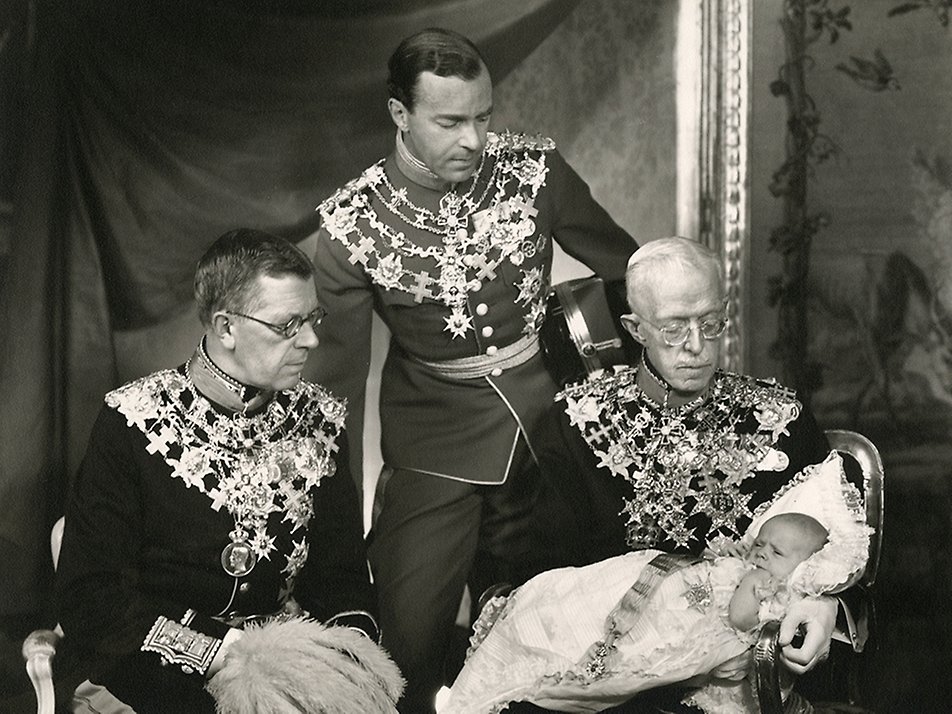Today is the fiftieth anniversary of the accession to the throne of Sweden of King Carl XVI Gustaf in 1973. His Golden Jubilee is being celebrated with a variety of events in and around Stockholm along with the Swedish Royal Family and members of their close relatives from the Danish and Norwegian dynasties. He is the longest reigning Swedish monarch. This year is also the quincentenary of the election of the first of the monarchs from the Vasa dynasty, King Gustaf I, in 1523.
The official portrait of the King of Sweden to mark his Golden Jubilee
Image: The Royal Court of Sweden / The Court Jeweller
I remember the death of the King’s grandfather King Gustaf VI Adolf and the present King’s accession which occurred whilst I was on holiday in East Anglia. It does not seem half a century since that happened - the holiday remains still very fresh in my memory.
I also recall some of the press coverage at the time. Given the age difference between the old King who was almost 91 and his 27 year old successor, and the fact that Sweden was revising its constitution - notably the 1809 Instrument of Government - in the light of developments during the intervening years which would remove the monarch’s residual political powers, journalists were dismissive of the future of the Swedish monarchy.
Fifty years on we can look back at those changes to the Swedish constitution which became law in 1975 ( having been accepted by King Gustaf Adolf before his death ), the present King’s marriage in 1976, and his and Queen Silvia’s raising of a new royal family, together with the maintenance of an impressive Court ceremonial, as a reminder, as the Psalmist might have written, to “put not your trust in journalists”….
It is worth noting that at his accession apart from the King himself the formally constituted Swedish Royal Family comprised his unmarried uncle Prince Bertil. The wider members of the House of Bernadotte did not count as “working royals” in that modern unlovely phrase, and had no rights of succession due to renunciation of rights for unequal marriages or being female as Sweden then had an exclusively male system of primogeniture.
King Carl XVI Gustaf at the time of his accession
Image: Wikimedia Commons / The Court Jeweller
The baptism of the present King on June 7th 1946. He is held by his great grandfather King Gustaf V, who is seated next to the Crown Prince, later King Gustaf VI Adolf, with the baby’s father Prince Gustaf Adolf, who was killed in a plane accident in 1947, standing between them. When the future King Gustaf V himself was baptised in 1858 he had been held by his great grandmother Queen Désirée, the widow of the first Bernadotte King Carl XIV Johann, the former French Marshal Bernadotte.
Image: kungahuset.se





